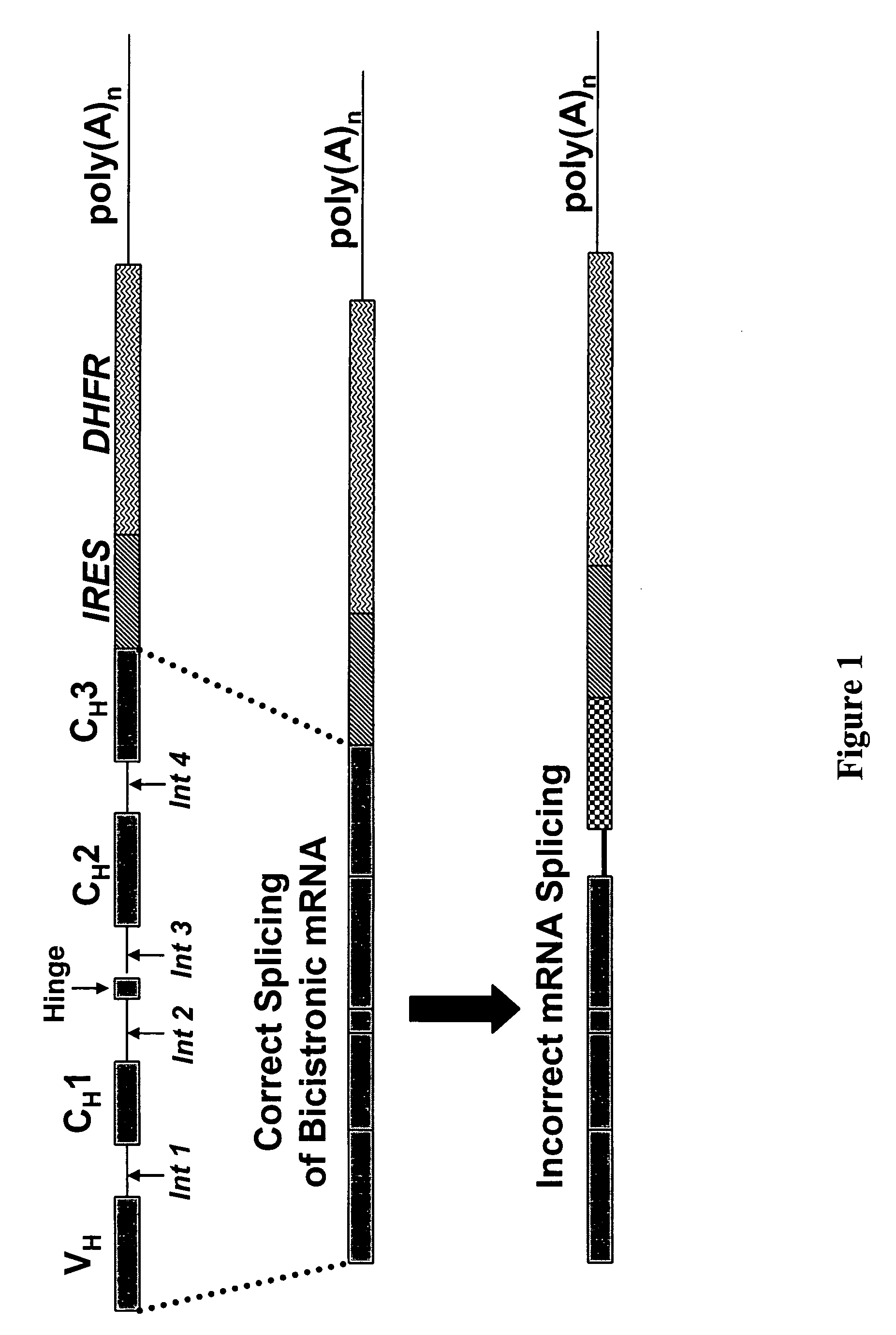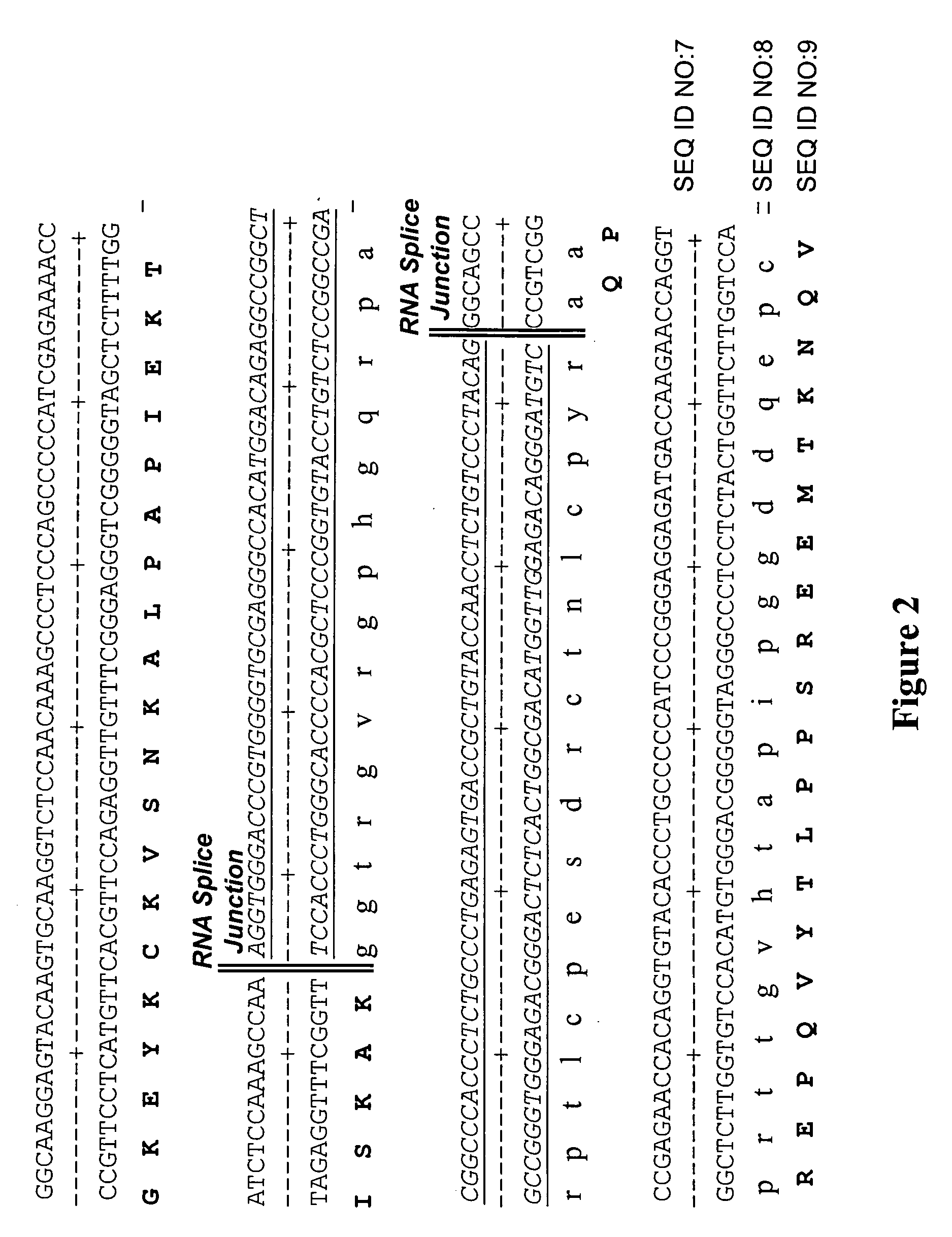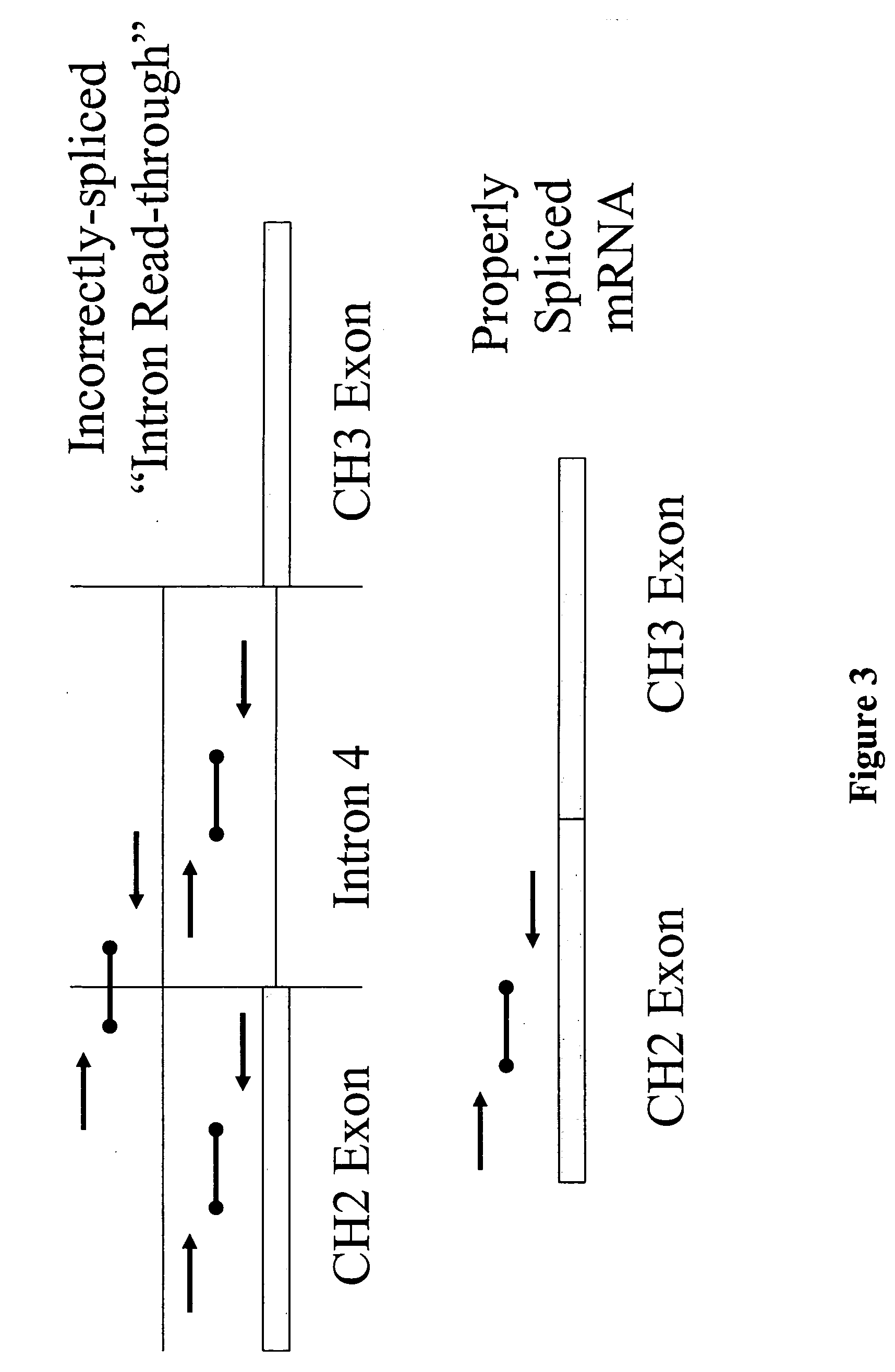Methods and compositions for improving recombinant protein production
a technology of recombinant protein and composition, which is applied in the direction of fused cells, drug compositions, antibody medical ingredients, etc., can solve the problems of reducing the activity and yield of the resultant therapeutic proteins, increasing the possibility of undesirable side effects, and by-products are also troublesome for manufacturing, so as to facilitate intron read-through, enhance protein expression, and reduce or eliminate mis-spliced or intron read-through
- Summary
- Abstract
- Description
- Claims
- Application Information
AI Technical Summary
Benefits of technology
Problems solved by technology
Method used
Image
Examples
example 1
Quantification of Intron Read-Through Transcription
[0136] In order to quantify the relative amount of aberrant transcript formed due to intron read through, a quantitative PCR assay was designed. The approach for evaluating IRT transcription is graphically outlined in FIG. 3. Specifically, a quantitative PCR assay was devised using a TaqMan™ system, in which PCR amplification was employed to quantitate nucleic acid species of interest. Three probe-primer sets were designed to determine the fraction of intron read-through mRNA being produced. The first probe-primer set was designed to quantitate the level of transcription of sequence of an exon in natural operative association with an intron of interest. In the case of the 3D6 heavy chain expression cassette, mRNA species containing the 3D6 second constant heavy chain (CH2) exon was targeted. This provided a measure of total 3D6 mRNA production. The second probe primer set bridged the intron and exon in operative association, here t...
example 2
Vectors With Introns and Exons Having Modified Natural Operative Association
[0139] Expression vectors were devised wherein the natural operative association of the introns and exons were modified. Two exemplary vectors sequences are shown in FIG. 5. This figure illustrates expression constructs developed to resolve the problem of intron read-through by-products. The top panel graphically depicts the genomic, intronic - exonic, organization of a generic antibody heavy chain containing the exons for a variable region (VH), three constant regions (CH1, CH2, CH3) and a hinge region. The middle and bottom drawings describe modifications to the genomic sequence incorporated into expression vectors which eliminated intron read through heavy chain by-products.
[0140] CHO cells expressing the 3D6 light chain were transformed with either the complete genomic heavy chain sequence of the 3D6 antibody or transformed with modified 3D6 heavy chain expression vectors wherein the natural operative ...
example 3
Origin and Description of the Anti-5T4 Coding Sequence
[0143] Anti-5T4 H8 was obtained as a mouse monoclonal antibody against soluble 5T4. The anti-5T4 H8 antibody was humanized by CDR grafting (VH, DP75 germline framework; VL DPK24 germline framework) and the variable regions were subcloned into vectors containing human IgG4 heavy chain constant domain (for VH domain) or human kappa light chain constant domain (VL domain) as appropriate. The humanized antibody is referred to as huH8. The hinge stabilizing mutation, Ser 241 to Pro, was introduced into the human IgG4. Sequences encoding huH8 heavy and light chain were ligated into expression vectors driven by the mouse CMV enhancer / promoter and containing the selectable marker genes dihydrofolate reductase (heavy chain expression vector) or neomycin resistance (light chain expression vector).
PUM
| Property | Measurement | Unit |
|---|---|---|
| Fraction | aaaaa | aaaaa |
| Fraction | aaaaa | aaaaa |
Abstract
Description
Claims
Application Information
 Login to View More
Login to View More - R&D
- Intellectual Property
- Life Sciences
- Materials
- Tech Scout
- Unparalleled Data Quality
- Higher Quality Content
- 60% Fewer Hallucinations
Browse by: Latest US Patents, China's latest patents, Technical Efficacy Thesaurus, Application Domain, Technology Topic, Popular Technical Reports.
© 2025 PatSnap. All rights reserved.Legal|Privacy policy|Modern Slavery Act Transparency Statement|Sitemap|About US| Contact US: help@patsnap.com



